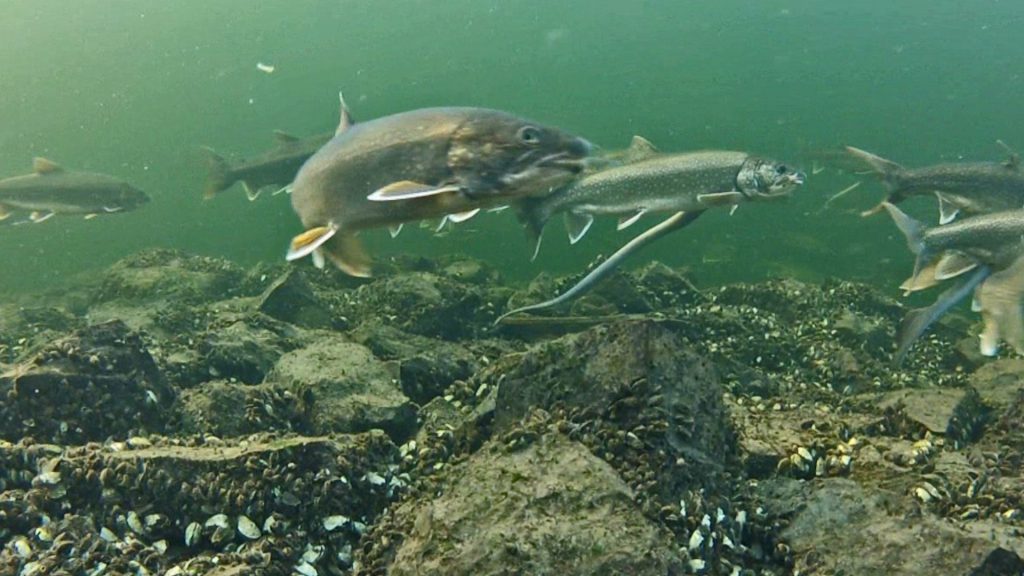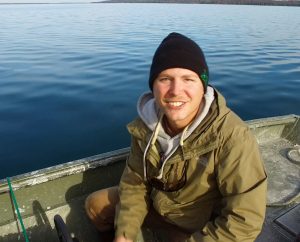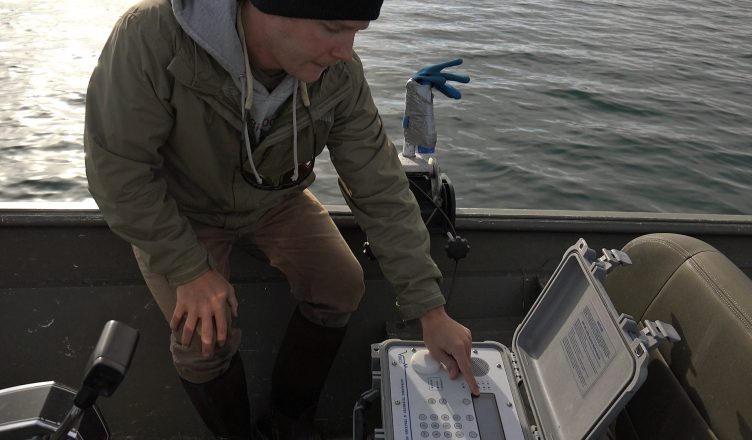
This short video essay, tells the story of Lake Michigan’s lake trout populations and the efforts to restore this iconic species of fish.
In the 1930s and 40s, sea lamprey made their way up the St. Lawrence Seaway through the shipping canals and spread into the Great Lakes. Within 20 years, predation by legions of parasitic lamprey coupled with commercial over fishing had wiped out all of Lake Michigan’s native populations of lake trout.
Over the last 60 years of so, the U.S. Fish and Wildlife Service (USFWS) has worked with the Michigan Department of Natural Resources (MDNR) and other state agencies, Indian tribes, academic institutions and private groups to restore wild, self-sustaining populations of lake trout in Lake Michigan. Selecting brood stock from locations as far away as Seneca Lake in New York, resource managers use a system of hatcheries to spawn and raise fish for release to the waters of Lake Michigan. A 2014, USFWS report says that an average of over 3.2 million lake trout were released into the waters and connecting rivers of Lake Michigan every year from 1976 through 2013.

All this time, fisheries scientists and resource managers have believed that there were no remnants of Lake Michigan’s original populations of lake trout left anywhere in the basin. But that changed with the confirmation that a team from MDNR’s Charlevoix Fisheries Research Station led by Jory Jonas had discovered a unique, self-sustaining population of lake trout in Antrim County’s Elk Lake. They have concluded that Elk Lake has been harboring a remnant of Lake Michigan’s native population of lake trout for all these years.
Research recently completed by graduate student, Kyle Broadway indicates that the Elk Lake strain of lake trout has special characteristics. In addition to looking different from existing hatchery strains, this fish likes colder water than any stocked strain of lake trout. If this trait can be retained in breeding stock, the Elk Lake strain might yield a lake trout population that thrives in deeper, colder water than now used by any other large predator fish.

As described by Jory Jonas, the successful re-introduction of the Elk Lake strain into Lake Michigan would be a huge success for fisheries managers. Better still, such a re-introduction would increase the genetic diversity and the resilience of lake trout populations in Lake Michigan.


Super cool! How did they confirm the origin of these fish? Genetic analysis?
Yes, both genetic and morphometric analyses were used. A complete description is in a scientific paper to be published this fall in the Journal of Great Lakes Research (Jory Jonas is lead author).